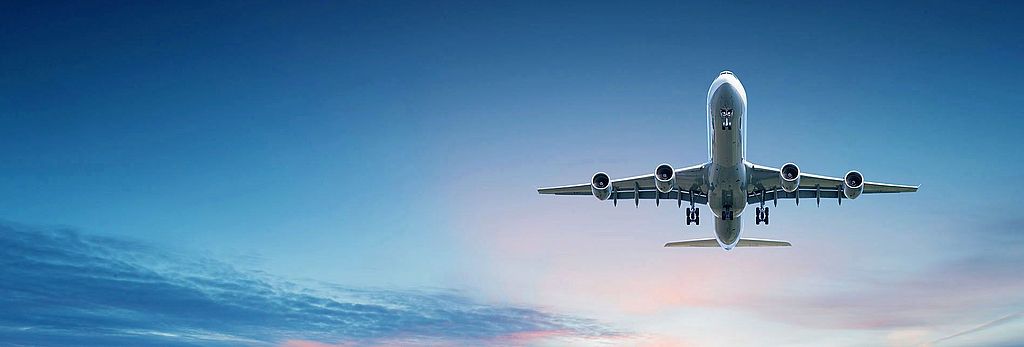
Aviation fuels:
Jet fuel (Jet A-1), aviation gasoline (avgas), Jet B, biokerosene, SAF
What are aviation fuels?
Aviation fuels are fuels used for aircraft propulsion. A basic distinction is made between the following aviation fuels:
- Jet fuel (Jet A-1, kerosene)
- Kerosene-gasoline mixture (Jet B)
- Aviation gasoline (avgas)
- Biokerosene
- SAF (sustainable aviation fuels)
Jet fuel (Jet A-1, kerosene)
Jet fuel (Jet A-1 type aviation fuel, also called JP-1A) is used globally in the turbine engines (jet engines, turboprops) in civil aviation. This is a carefully refined, light petroleum. The fuel type is kerosene. Jet A-1 has a flash point higher than 38°C and a freezing point of -47°C. Jet A is a similar kerosene fuel type that is normally available only in the U.S.
After refining, aviation fuel is mixed with extremely small amounts of several additives. Among other things, these additives prevent the fuel igniting in an uncontrolled manner, stop deposits from forming in the turbine, or the aviation fuel becoming electrically charged. There are also additives that prevent the growth of organisms in aviation fuel. Certain other additives ensure that the jet fuel does not freeze: The air temperature at cruising altitude is often below -30°C (-22°F), and aviation fuel freezing would have life-threatening consequences. NATO military aircraft use the same aircraft fuel – with even more special additives – under the name Jet Propellant 8 (JP-8).
Due to the very high demands of aircraft engines on jet fuel, this fuel is subject to very comprehensive, internationally standardized quality specifications.
Kerosene-gasoline mixture (Jet B)
This aviation fuel is used for military jets. This special blend (grade Jet B, also called JP-4) of about 65% gasoline and 35% kerosene is used in regions with particularly low temperatures, because it is more flammable with a flash point of 20°C, and its freezing point can be as low as -72°C (as compared to -47°C for Jet A-1). However, the engines must be suitable for the use of these aviation fuels.
Aviation gasoline (avgas)
Aviation gasoline is also called avgas for short. This aviation fuel is usually only used in the older piston engines of sports aircraft and small private aircraft that require leaded fuel with a high octane number. Avgas as leaded gasoline with 100 octane meets these requirements. Globally, only the avgas 100 LL variety is still available, a regular low-lead (LL) gasoline that is subject to the U.S. ASTM D910 standard for 100 LL. Only aircraft with a gasoline engine can be operated with avgas; turbine-powered aircraft or those with diesel engines require kerosene as a fuel (cf. jet fuel).
As avgas is expensive, there is an increasing shift to diesel fuel and kerosene. The high price results from the low production volume, long supply routes, and elaborate quality controls. The spread of mogas (motor gasoline) is also connected with the high price of avgas. Mogas is relatively cheaper and equivalent to service-station Super gasoline – plus a few additives. However, the spread of mogas has been slow as the necessary modification of aircraft engines can be very complex.
Biokerosene
As a fossil fuel, jet fuel will become more expensive in the long term. Therefore, research on renewable alternatives has been ongoing for some time now, e.g. on biokerosene based on algae or biofuels from jatropha and camelina oil or “Solar Jet”. Biokerosene is a mixture of kerosene and biofuels that the aviation industry has been testing for several years in numerous test flights.
SAF - Sustainable Aviation Fuels
Sustainable Aviation Fuels (SAF) are a real alternative to fossil aviation fuels. Aviation is just as important for the energy transition as the transport sector and industry in reducing CO2 emissions. Electric propulsion and hydrogen (H2) as fuel or propulsion types are currently not yet alternatives. Projects, e.g. with regard to the establishment of a hydrogen infrastructure, are in the development phase. With SAF - Sustainable Aviation Fuels - there is already a (synthetically produced) aviation fuel for reducing emissions, which is produced from sustainable resources and has very similar chemical properties to fossil aviation fuel (jet fuel). Up to 80% of CO2 emissions can already be saved by using Sustainable Aviation Fuels (SAF) compared to conventional jet fuel, depending on the raw materials used for its production, the production method and the transport and storage route to the airport as the point of use.
SAF can be blended up to 50% with conventional jet fuel. The same quality standards are specified as for conventional jet fuel.
Sustainable Aviation Fuels can be stored, transported and handled in the same way as conventional aviation fuels due to their very similar properties.
Compared to jet fuel, SAF are currently more cost-intensive due to their lower availability and production processes.
Overview of aviation fuels
| Designation | Aviation fuel type | Application |
|---|---|---|
Jet A-1
SAF | Kerosene | Civil aviation (jet engine, turboprop) |
| Jet B | Kerosene-gasoline mixture | Civil aviation, military (jet engine) |
Avgas 100 LL
Mogas | Gasoline
Super gasoline with additives | Sports aircraft (piston/gasoline engine) |
| Biokerosene | Kerosene-biofuel mixture | Civil aviation, also tests for military |
Taxation
As a rule, commercial airlines from Germany that transport passengers or goods are exempt from energy tax on both kerosene and jet fuel - but this exemption does not apply to private flying. The German tax exemption is based on EU law and various international agreements. At European level, however, under Article 14 of EU Directive 2003/96, Member States can limit the tax exemption to supplies of kerosene as well as to international and intra-EU transport.
Status: March 2022
All information subject to change. Errors and omissions excepted.

